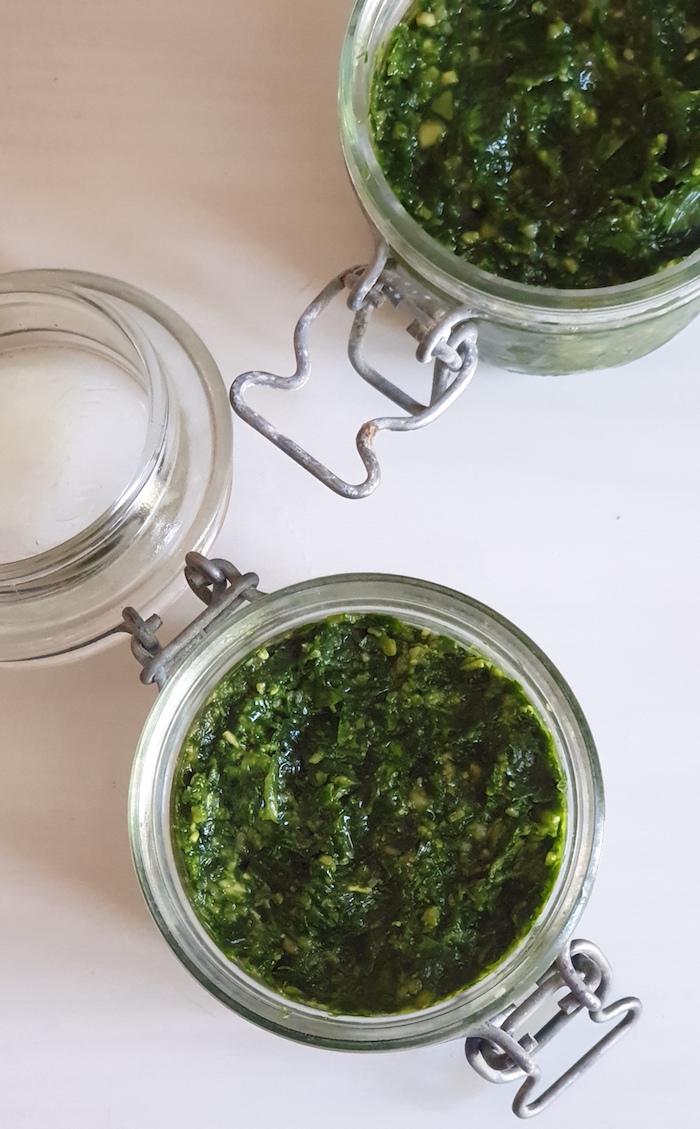Ramson pesto
Wild garlic (Allium ursinum), also known as ramsons or bear’s garlic, is one of those forgotten plants that became popular again the last few years. Even though I grew up right next to a forest and even learned about its existence in Pharmacy school, I tasted it for the first time in Belgium and I loved it! But is wild garlic anyway? Where do you find it and what can you do with it?
First things first, wild garlic is a bulbous plant from the Amaryllidaceae family. The garlic, onion, chives, leek family but also tulips and daffodils… but that’s a story for another day. The leaves grow from the base of the plant and are pointed with a smooth edge. The flowers are small, white, with six pointed petals and are all grouped at the top of a stalk. It can be confused with lilly of the valley when not in flower, but wild garlic leaves are thin and crease easily… plus they smell of garlic.
Wild garlic grows in patches, so the best way to find it is to trust your nose. If you’re walking in a forest and all of a sudden you smell garlic, there must be a patch somewhere. They grow from the beginning of spring in damp and shady wooded areas and disappear before summer. Once you’ve found a spot, you can keep going there every year.
Obviously, there are many ways to cook wild garlic. The leaves are mild in flavour and taste best before the flowers appear. The most popular recipe is probably wild garlic pesto and I have a delicious vegan take on the recipe for you!
Ingredients:
– 100g fresh wild garlic
– 30g pine nuts (or almonds or cashews)
– 2 tbsp. nutritional yeast
– 10 cl olive oil
– salt to taste
Instructions:
Rinse and roughly chop the wild garlic. Place all ingredients in your food processor and blend into a rough paste. Use fresh or store in a jar for up to two weeks. This mixture can also be frozen or even preserved by canning.






